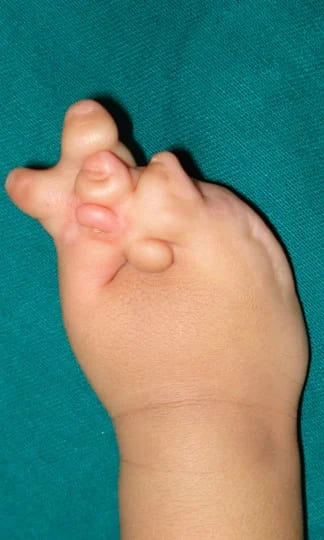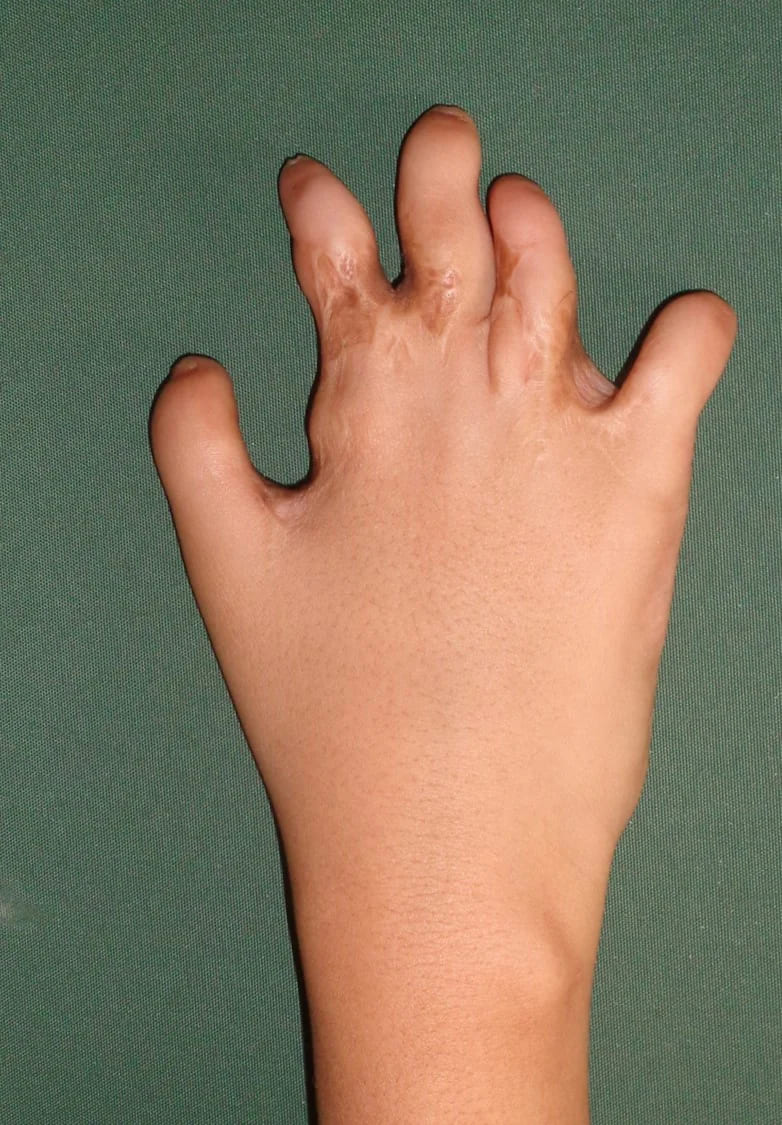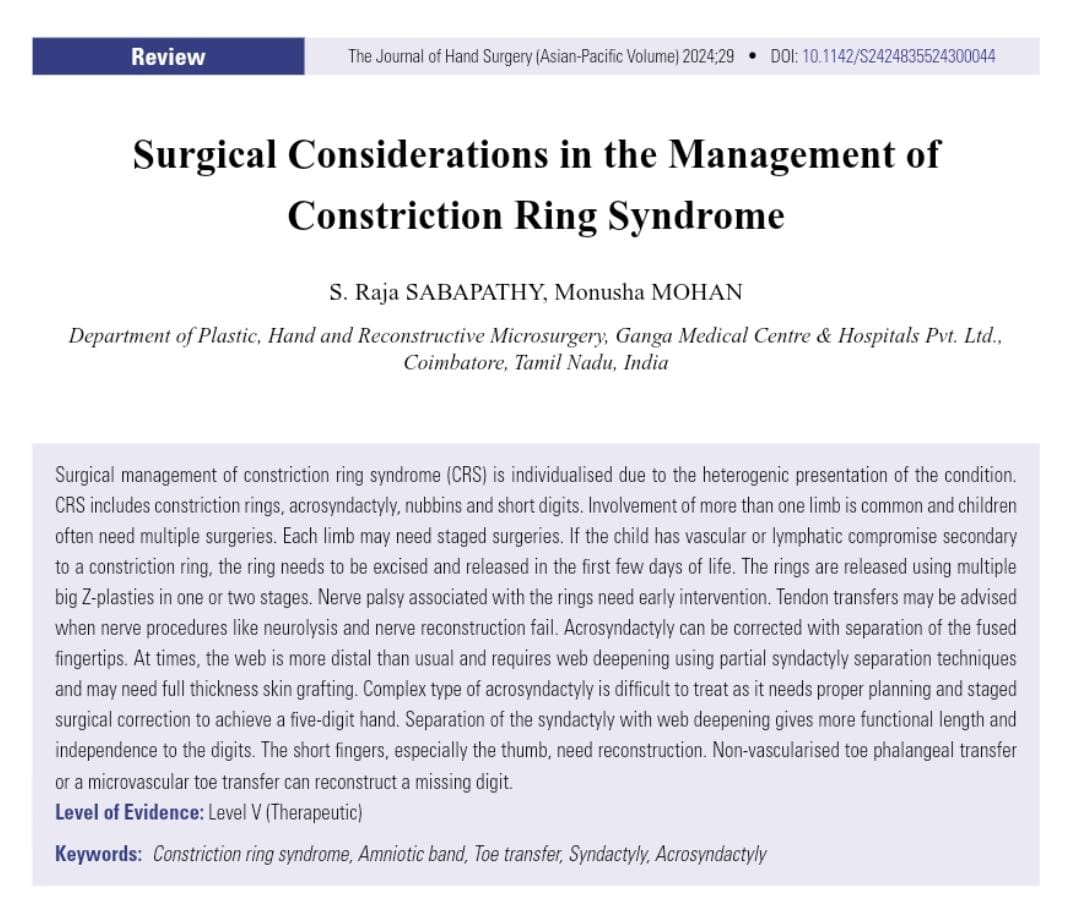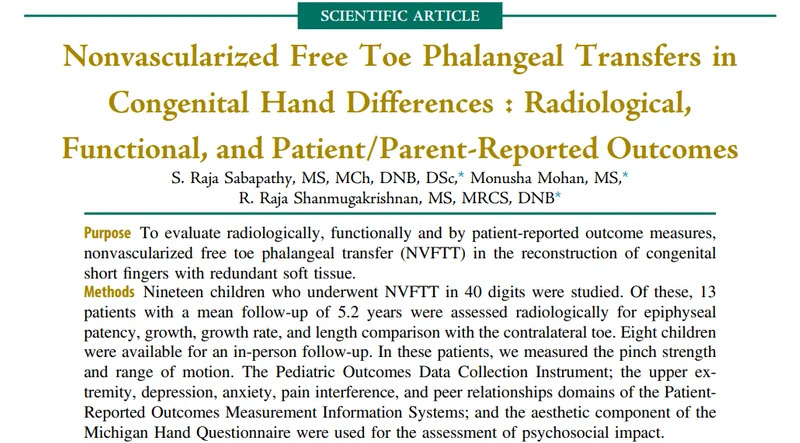Constriction Ring Syndrome (Amniotic Band Syndrome)
Constriction ring syndrome is characterised by constrictive rings that cause deformed fingers or amputation. The clinical features can vary widely. Though limbs are most commonly affected, craniofacial and body anomalies are also seen in everyday practice. Multiple limb involvement is common. The incidence varies from 1 in 1200 to 1 in 15 000 births according to geographical locations across the world.

Pre OP

Post OP
Our patient with a complex type of Constriction Ring Syndrome. The finger were seperated after surgeries.
Cause
The condition was previously thought to be due to amniotic bands encircling the hands and legs. Currently, a defective germplasm theory is gaining more popularity with better evaluation and information sharing. The cause is thought to be multifactorial.
Treatment
Management of the rings require excision of the ring and Z plasties in single or multiple stages. If the bands cause severe distal edema or neurovascular compromise, immediate surgery is needed in the newborn period. The syndactyly needs separation with full thickness skin grafting. The skin graft is harvested from the child's groin. If the border digits ie., thumb and little finger are involved in syndactyly, separation may be done as early as 6-9 months of age.
Complex surgeries like non vascularized toe phalangeal transfer or microsurgical toe transfer may be needed to create fingers or thumb in cases of amputation. In the former procedure, the phalangeal bones from the toes can be transferred to the soft tissue nubbins in the hand to create fingers. This procedure has been found to have better results when performed before 18 months of age. The latter is a major procedure that takes around 10 hours. The second toe from the foot is transferred to the hand to create a thumb or little finger using microsurgical techniques. We at Ganga, have world renowned microsurgical experts to do the joining of the tiny arteries, veins and nerves. The toe transfer is done when the child is 3-4 years of age.

Pre OP








